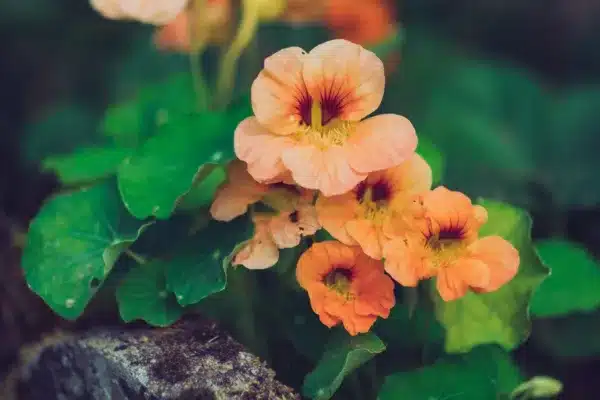Hey, fellow gardeners! I’m here to talk about one of my absolute favorite plants to grow: nasturtiums! Not only are they beautiful and colorful, but they’re also delicious and easy to grow. Plus, they have some amazing health benefits that make them a must-have in any garden.
Nasturtiums: Beautiful, Colorful, and Delicious
Nasturtiums are a flowering plant that comes in a variety of colors, from bright oranges and yellows to deep reds and pinks. They’re also known for their unique peppery flavor, which makes them a great addition to salads, sandwiches, and other dishes.
The Health Benefits of Nasturtiums: A Must-Have in Your Garden
But did you know that nasturtiums are also high in vitamin C and have antimicrobial properties that can help fight off infections and illnesses? According to Urban Cultivator “studies have shown that the leaves also have antibiotic properties, and suggest that they are the most effective prior to flowering.
Nasturtium is used in traditional medicine, treating a wide range of illnesses and conditions, such as hair loss.” Pretty cool, right?

How to Grow Nasturtiums: Easy and Beginner-Friendly
Nasturtiums are incredibly easy to grow, even for beginners. Here are some tips on how to get started:
Choose the Right Spot
First, choose a spot in your garden that gets plenty of sunshine (although nasturtiums can handle some shade too). They also prefer well-draining soil, so make sure the spot you choose isn’t too waterlogged.
Plant the Seeds
You can either plant the seeds directly in the ground after the last frost, or start them indoors a few weeks earlier. If you’re starting them indoors, plant the seeds in a small pot and keep them in a warm, sunny spot until they start to sprout. Then, you can transplant them into your garden.
When planting the seeds, make sure to plant them about an inch deep and a few inches apart. Nasturtiums grow quickly, so they don’t need much space between them.
Water and Fertilize
Once your nasturtiums are planted, give them a good watering to help them get established. After that, you only need to water them once a week or so, depending on the weather. They don’t need much fertilizer, but you can give them a little bit once a month to help them grow.
Watch Them Grow!
And that’s it! Nasturtiums are pretty low-maintenance plants, so you don’t need to do much to help them grow. Just make sure to keep an eye on them and pick off any dead flowers or leaves to keep them looking healthy.
Overall, growing nasturtiums is a fun and easy way to add some color and flavor to your garden. So go ahead and give them a try!

Companion Planting with Nasturtiums: Helping Your Garden Thrive
One thing that I love about nasturtiums is that they’re great for companion planting. They attract helpful insects like bees and ladybugs. If you want to learn about other plants which attract ladybugs, see our related blog post Grow These 7 Plants to Attract Ladybugs. But nasturtiums also deter pests like aphids and white flies. Plus, they can be planted alongside other veggies like tomatoes, cucumbers, and beans to help boost their growth and health. And if you’re growing herbs like rosemary, sage, or thyme, planting nasturtiums nearby can also help keep those pesky bugs at bay.
Harvesting Nasturtiums: From Salads to Pesto
Now, let’s talk about harvesting. The leaves and flowers of nasturtiums are edible and can be used in a variety of dishes. Just pick them as soon as they bloom and add them to salads, sandwiches, pasta dishes, and more. You can even get creative and freeze them in ice cubes or dry them out for later use. And if you’re feeling adventurous, try making some nasturtium vinegar or pesto. Trust me, your taste buds will thank you!
So there you have it, folks. Nasturtiums are a beautiful, delicious, and easy-to-grow plant that should have a place in every garden. They’re great for companion planting, packed with health benefits, and versatile in the kitchen. So go ahead and give them a try. I promise you won’t be disappointed!

